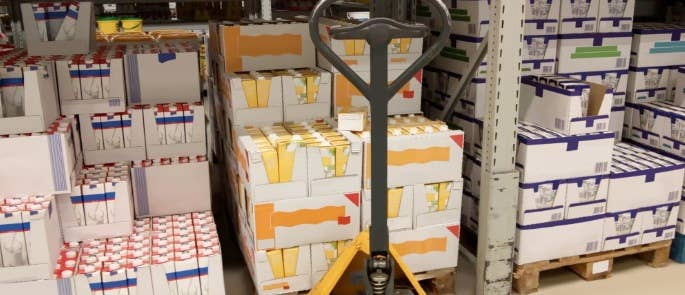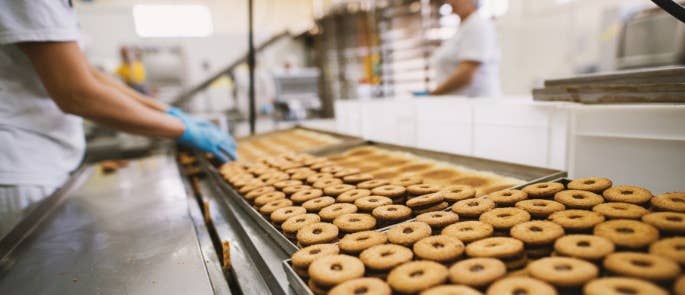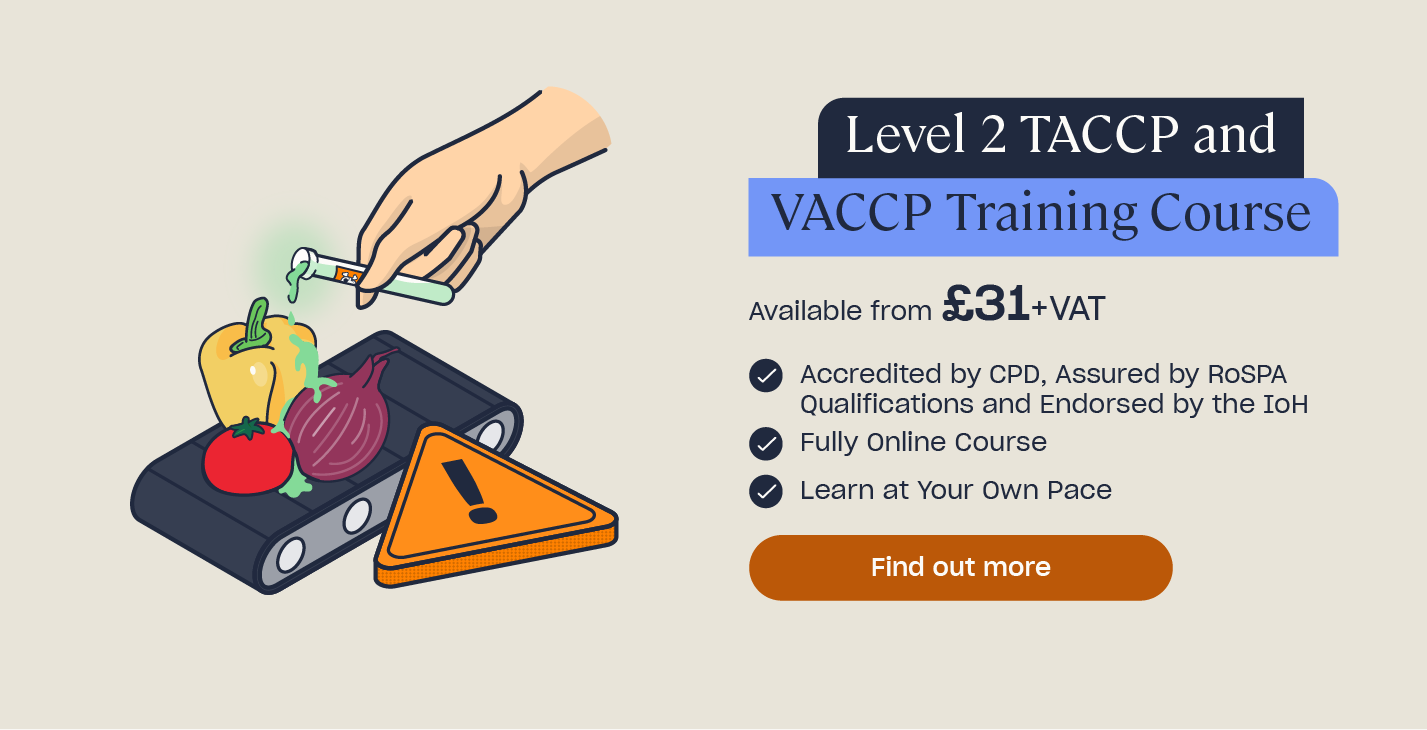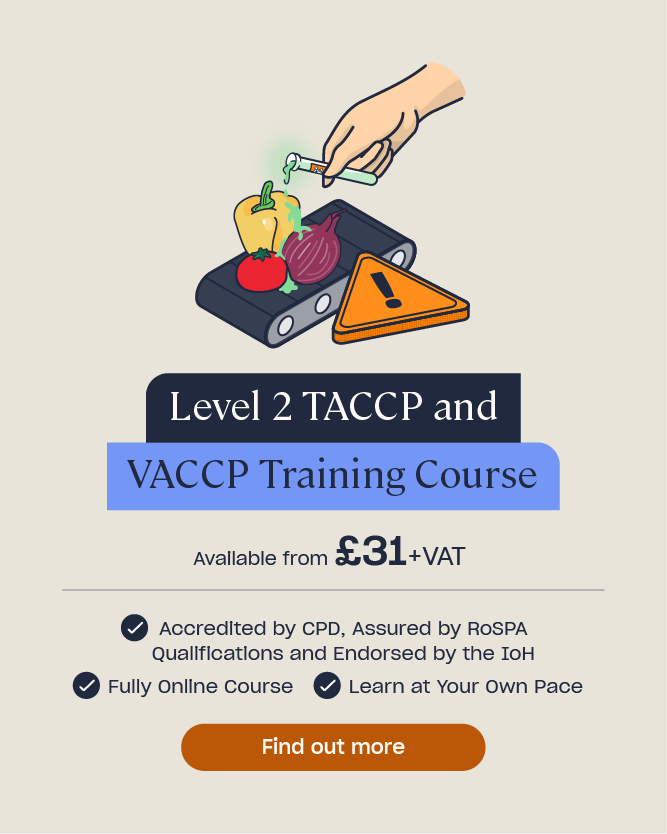Food Supply Chain: Importance & Management Strategies
A food supply chain is the process that all food products go through, from production all the way through to consumption. The food supply chain is, thus, a hugely important step in how you safely consume and understand the food you eat.
However, many take their food supply at face value, and don’t realise all the essential steps take place in between farm and fork. In this article, we will define what is meant by the food supply chain and explain why it is so important. We will also look at the different types of food supply chain models and look into management strategies and challenges that manufacturers face.
What is the Food Supply Chain?
The food supply chain comprises all the stages that food products go through during their movement from producer to customers and consumers. Now more than ever, food supply chains have seen a huge period of growth. Whilst this may initially be seen as beneficial to food production lines, it does however mean that the chains inevitably become more fragmented. This makes it more difficult for consumers to easily trace their food to its origins, often with food being transported from all corners of the world, over a long time frame.
There are certain key stages that appear in the food supply chain, including:
- Production – This is where the food supply begins at a production level, and where the food is sourced. Whether it is grown or developed, the food will follow local and international guidelines to ensure quality and food safety.
- Handling and Storage – This refers to the preparation and last minute steps that food undergoes once the product has been harvested. This step will occur before food is sent to be processed.
- Processing and Packaging – This is where the food, whether it be from plants or animals, is converted into an edible form. Here it is especially important that the food meets all food safety requirements before it is packaged for sale and distribution.
- Distribution – This is where, once the food is edible, it is transported and distributed to the necessary retail or supplier.
- Retailing – This is the process used to deliver the products from suppliers to consumers, and involves everything from obtaining the food to selling it on.
- Consumption – This takes place once the customer purchases a food from a retailer.

Types of Food Supply Chain
There are 6 models of food supply chains, but they all fit into one of two categories – efficiency or responsiveness. All supply chains will contain both elements in some way, but the main focus will be driven by the businesses supply chain model.
The 6 supply chain models are:
- Continuous flow –This model is beneficial to use within high demand production as it offers stability. This makes it ideal for manufacturers who make products which do not often change.
- Fast-chain – These models work well for manufacturers that work with shorter life cycle products as it is flexible and products can easily and quickly be changed out.
- Efficient – In a competitive market, efficient models are the go-to of all supply chains. They provide high standards at a highly efficient level.
- Agile – When a food manufacturing business deals with specialty items, they will likely use agile supply chain management because this allows movement to be increased in necessary cases.
- Flexible – The ability to be flexible in a food production line is a huge bonus as it allows businesses to meet demand with more ease.
- Custom configured – This refers to models which are customised. This customisation is set during the assembly and production of the product. It can be seen as a hybrid between the agile and continuous flow models.

Why is the Food Supply Chain Important?
Once you have an understanding of what a food supply chain is, you may then begin to understand its importance. A solid food supply chain is essential in order to produce food safe products that meet the consumer demand for high quality food. The retail and hospitality industries that buy the products, for example, want to purchase high quality food at a low price from the supplier so they can still make a profit and offer competitive prices. The key to meeting consumer demand for high quality food products starts with a well managed food supply chain, and this will also help to deter problems from arising and causing loss down the line.
Food supply chains are also vital in ensuring food safety and traceability of products, meaning both manufacturers and consumers can easily trace food back to its origins. For manufacturers, this is needed if product recalls or withdrawals are required and for consumers, it means that they can understand the origin of their food and how it has been produced.

In recent years, people have become more aware of the environmental impact that certain food supply chains may be having. A key takeaway from this is the focus on short food supply chains. There are economic, environmental and social benefits to shorter food chains and the increased connection to where their food comes from, is likely to lead to less waste and increased trust among consumers.
Longer supply chains, on the other hand, result in less understanding of the agricultural processes behind the food we eat, the challenges faced by farmers and the impact of our choices on the environment. In fact, short food chains offer mutual benefits to both farmers and consumers, acting as a model to increase transparency, trust, growth and equity.
Need a Course?
To learn more about the importance of the food manufacturing supply chain and how to manage the risks involved, take a look at our Level 2 TACCP Training course.
What are the Problems with the Food Supply Chain?
The food supply chain plays a key role in making sure that the food we eat reaches our mouths safely. It is an elaborate system required by the global community to maintain food safety, sustainability and security. Although it is designed and programmed to run without errors, this can’t always be avoided. Whether due to a systems malfunction, human error or cyber attack there is much that can go wrong.
Just one disruption in the chain, be it short or long-term, internal or external, can lead to shortages, poisoning or increased pricing of products and this will often affect the most vulnerable amongst the population.
Following Brexit, the farming industry – which is integral to the production stage of the food supply chain – has seen chronic labour shortages. As such, concern has been raised over a multitude of resulting issues which range from animal welfare, food security, rising food prices and the mental health of workers. This is a key example of how legislations and changes such as Brexit have such a widespread impact with food supply chains often taking the blame.

As technology evolves, we are able to take a closer look into the complexities of food supply chains, and this is hugely beneficial in allowing communication across various areas of the chain. However, there are still many challenges involving communication amongst the industry as a whole. The supply and food chain are fragmented. Each company has their own unique system based on their roles. Because of this, workers in all areas of the supply chain may face difficulties communicating with one another in a way that suits their different systems. This can result in anything from delayed deliveries, to contamination risk, to food spoilage.
Technology is an integral part of the food supply chain, and this also comes with risks in the form of cyber attacks. From farm to fork, food is becoming more and more digitised – driven by soaring consumer demand and an inability to keep up based on manual data alone. For example, during the production stages of the food supply chain, technology is used to monitor storage temperatures and much more. If this was compromised, the entire supply of product in these storage areas would no longer be safe for consumption. For more guidance on cyber security in food manufacturing, check out our article here.
Some more examples of problems that the food supply chains may face are:
- Increased product demand.
- Restaurants and inventory management.
- Growing demand and groceries.
Supply Chain Risk Management Strategies
In recent years, a number of food manufacturing giants have been rocked by unforeseen supply chain disruptions – with the vulnerable areas of their food supply chain targeted. Within the management of food supply chains, to minimise risk, certain areas of production must be documented. For example, these include, but are not limited to:
- The incoming quality of materials.
- Processing methodology.
- Storage conditions.
- Outgoing quality.
Food safety management systems such as HACCP are essential in keeping on top of risks. A food safety management system is the application of policies, systems and processes based on the principles of HACCP which ensures that every possible practical measure is taken to protect consumers from contaminated food. Food safety management is a fundamental requirement for all food businesses within the food supply chain to ensure that the food produced is safe for consumption.

Implementing the plan is much easier if someone from each area and level of the business is represented, as it allows all factors to be considered. Having a food safety management team with knowledge from as many different areas as possible will be of great use. To find out more on food safety management systems, take a look at our online HACCP training, here.
We hope you found this article useful in understanding the food supply chain, its importance and impacts on our wider society. For any more information, feel free to get in touch. High Speed Training offers a wide variety of courses and resources that can help.
Further Resources:
- Level 2 TACCP Training Course
- What Does the BRCGS Grading System Mean?
- Sustainable Food Practices: Choices & Importance
- Who is Responsible for the Traceability of Food?
- Food Fraud: Product Traceability Template
- How to Accept Frozen Food Deliveries: A Safety Checklist
- 17 Ways to Reduce Food Waste in Your Restaurant
- Level 3 HACCP Training for Catering & Retail
- How to Choose a Reputable Food Supplier
- HACCP Quiz
- What is ISO 22000 – Food Safety Management?











